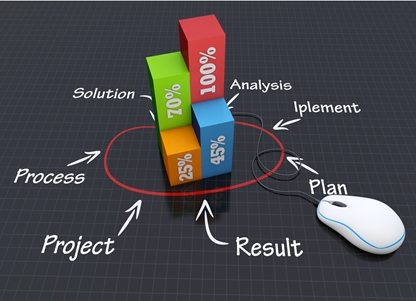The average decision-maker in the private sector has started to focus more on business process automation deployments than ever before, driven by the simultaneous increasing speed with which IT is evolving and the diversity of software options entering into the market. Automating core corporate functions can have a significantly positive impact on a company's bottom line, as these technologies can reduce the amount of resources needed to complete tasks while improving the accuracy and effectiveness of processes.
In many ways, it is best to start small and build the use of process automation out in a structured, comfortable and patient fashion, as a failure to do can hinder the high returns on investment many leaders will expect. One of the main points of automating business processes is to reduce errors and oversights that result from human interference, which is why the deployment and implementation stages of these projects are so important.
With so many options out there, companies that have never truly embraced automation software before will likely face an uphill battle in the provisioning process, but can make their lives a bit easier by aligning with a partner that offers a full range of implementation and management services. This way configuration and other critical aspects will be covered by experts, leaving less of a chance for costly errors that lead to time and money lost.
Luckily for business owners, the focus among managed service providers has changed from simply vending these solutions in an out-of-the-box fashion, and toward a more guided and hands-on level of assistance. Tapping these resources can help optimize business processes in a relatively short period of time, all the while reducing errors and inefficiencies that would otherwise yield waste in various components of corporate operations.
How relationships form
MSP Mentor recently explained some of the ways in which managed service providers can better assist clientele in the early and late stages of process automation deployments, affirming that analysis, research and alignment need to be high priorities for all parties involved. Business leaders who are looking to purchase and deploy process automation software should be on the lookout for vendors that take these types of approaches to guidance and management.
According to the news provider, identification of processes that would be best suited to automation overhauls is the primary step toward a successful experience with the technology, and both the MSP and the adopting firm should be working together to develop an exhaustive list of these components. This can sometimes be a difficult task, especially when the business has a robust and diverse set of operational processes.
To smooth this out, leaders should be working to create a comprehensive list of business processes to ensure that they are not missing any major points that could be effectively improved through the use of automation software. The source went on to explain that the selection of a professional services automation system will be important to streamline the relationship between the MSP and the client, which can in turn lead to a more beneficial outcome in the long run.
After all, when everyone on each side of the contract knows what responsibilities they need to cover, the chances of matters falling through the cracks will be relatively low. Finally, MSP Mentor asserted that standardization will be critical to the overall success of these contracts and relationships, as it will yield the consistency necessary to make a process automation strategy truly optimal in a relatively short period of time and throughout the deployment's lifecycle.
With the right planning and plenty of research before entering the provisioning stages of process automation software, businesses can better position themselves to excel with these technologies.
The long view
Although the implementation, configuration and deployment phases of these projects are critical, companies cannot lose sight of the long-term perspective at any point in time, as this will generally lead to suboptimal outcomes. Returns on investment are measured throughout the lifecycle of the products and services, meaning that plans need to cover each step in the strategy to keep those profits up.
The best way to ensure that returns on investment roll on in the long-term is to have a sound plan in place right from the outset of these projects to govern steps down the road. By devising a plan that takes into account all the information on the table in the beginning, but maintains a solid level of flexibility with respect to evaluations and adjustments, process automation deployments will often come back with stronger results over time.
This is another reason why partnering with a trusted provider of automation solutions can help companies of all types and sizes get a stronger handle on their process management and software investments. A solid vendor will assist in oversight and support throughout the lifecycle of the software.






